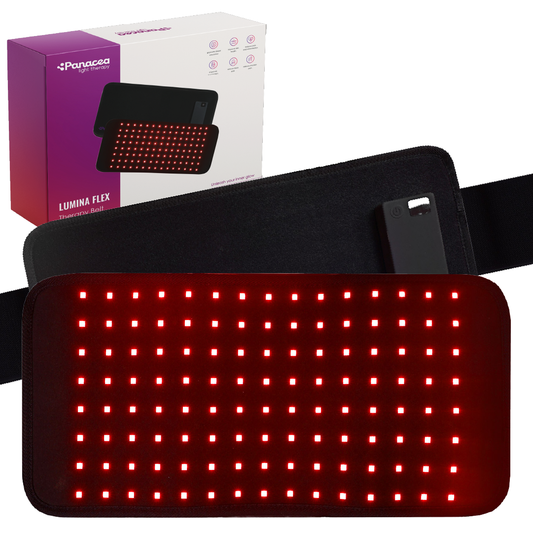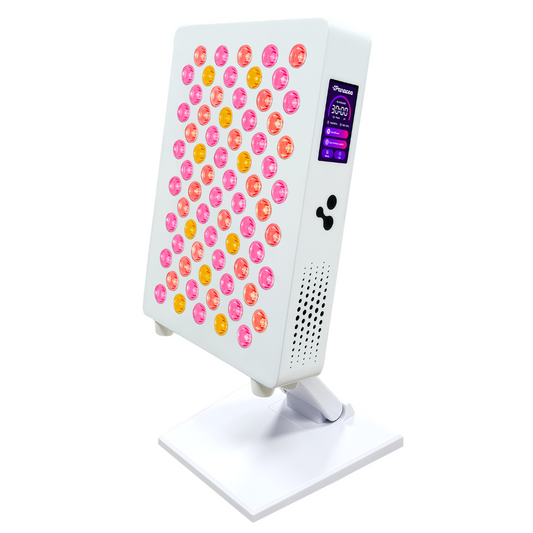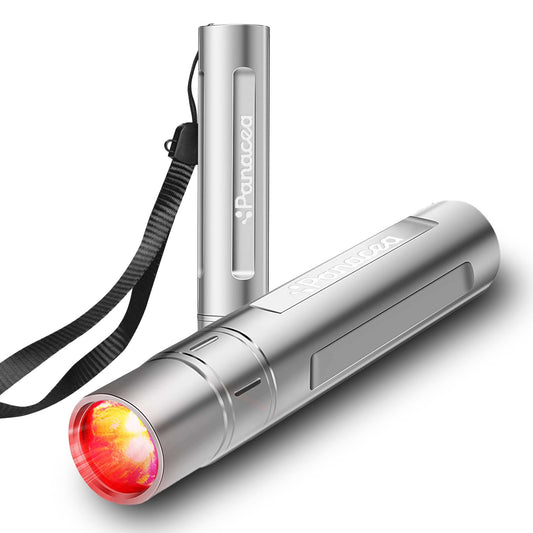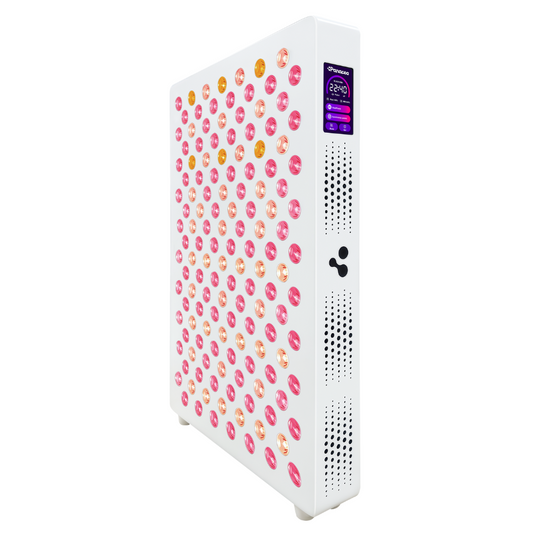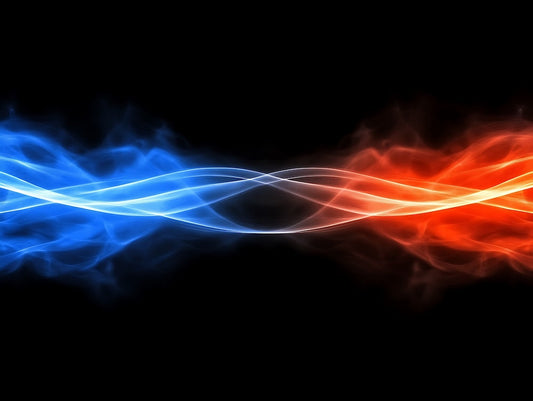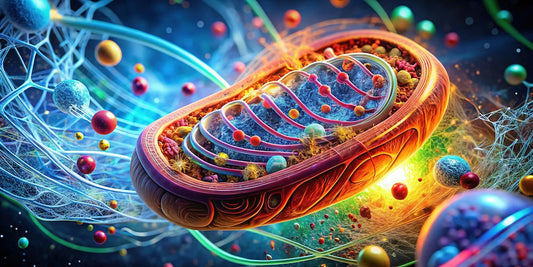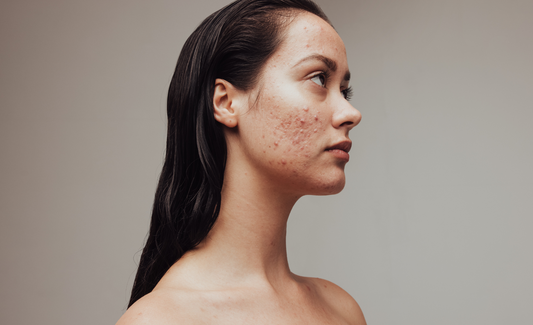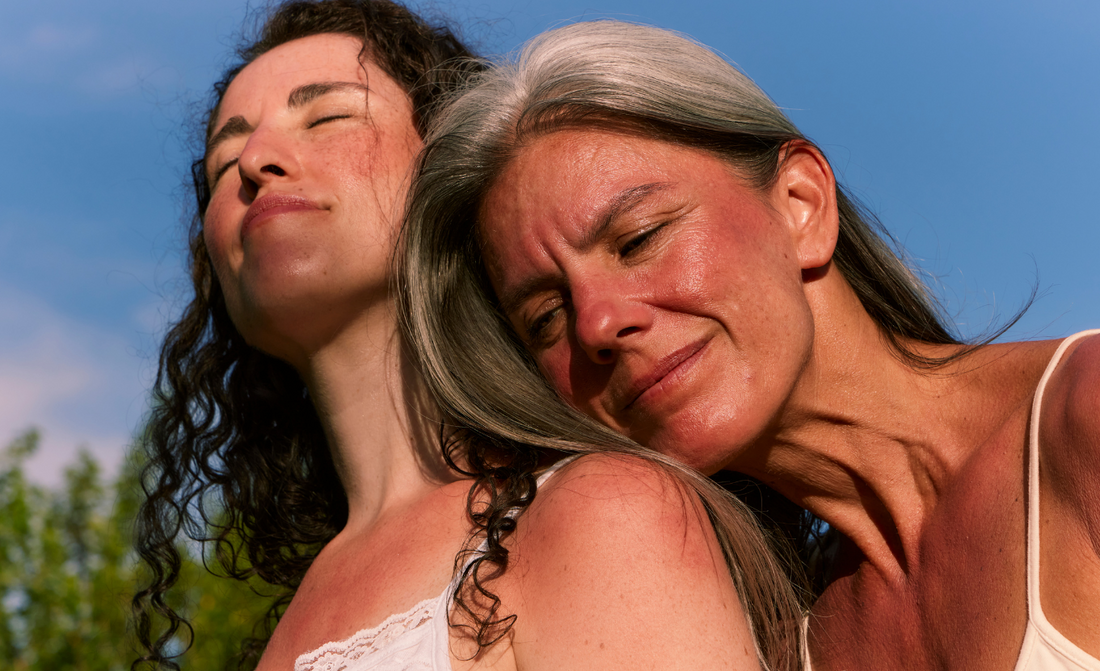
Faster skin recovery after sunbathing with red light therapy
Share
Why red light is the natural solution for sensitive summer skin – and why Australia is already a convert
The sun on your face, a light breeze, the feeling of freedom that spring and summer bring – it’s wonderful. But let’s be honest: sometimes we forget to expose ourselves to those warm rays of the sun for just a little too long. Before you know it, your skin is red, tight and burning. Even without real burning, your skin often feels oversensitive or dehydrated after a day outside.
Instead of waiting for your skin to heal itself or smearing yourself with cooling gels and creams, there is another, deep-acting and natural way to support your skin: red light therapy .
What does the sun do to your skin?
Sunlight consists of different types of radiation, including UVA and UVB. These cause damage to the skin cells, trigger inflammation processes and break down collagen. You notice this in the form of redness, dryness, sensitivity or even peeling. Micro-damage, which you cannot see with the naked eye, can also slow down the natural recovery process.
It is precisely in this recovery phase that it is essential to support the skin at a cellular level. This is where red light therapy comes into play.
How does red light therapy work in skin repair?
Red light therapy (also called photobiomodulation) uses specific wavelengths of light – primarily 630nm and 660nm – to penetrate deep into the skin’s layers. These waves activate the mitochondria in your skin cells, which leads to increased production of ATP (cellular energy). This allows skin cells to repair themselves faster, reduce inflammation and produce collagen.
What this means for your skin:
- Faster recovery from sun damage
- Less redness, itching or tightness
- Promotion of collagen production
- Strengthening the skin barrier
- Reduction of oxidative stress (caused by UV)
The result: your skin feels calmer, recovers faster, and stays better hydrated.
The power of the right wavelengths
At Panacea Light Therapy we use advanced light panels that work with 630 nm and 660 nm – the two wavelengths that have been shown in research to be the most effective for skin repair.
- 630 nm: Works superficially in the upper skin layers. Stimulates cell renewal and soothes mild redness or dryness.
- 660 nm: Penetrates deeper and helps with connective tissue repair, wound healing and anti-inflammatory.
When red light therapy is combined with wavelengths such as 850 nm or 940 nm , deeper inflammation or long-term skin sensitivity can also be addressed, such as sun allergy or actinic damage.
Why red light therapy is so popular in Australia
Not only in Europe and North America is interest in red light therapy growing – the method is already well established in sun-drenched countries such as Australia . In Australia, the risk of sunburn and UV damage is much greater due to the thinner ozone layer and high solar power. The skin is therefore structurally more heavily stressed there, which leads to a strong focus on natural skin repair methods.
Australian skin clinics, wellness centres and consumers are making extensive use of red light therapy as an after-treatment after sun exposure. Not only for cosmetic recovery, but also for medical skin care for sun allergy, eczema or hypersensitivity. The use of LED therapy for skin support has now become part of regular skin care routines there.
Research from the University of Sydney, among others, shows that light therapy with 630 and 660 nm is used effectively in accelerating wound healing, reducing inflammation and improving skin quality in the event of UV damage.
Scientific basis
Several studies show that red light therapy has a positive effect on damaged skin after exposure to UV radiation:
-
Barolet et al. (2008) investigated how 660 nm light repairs the skin after sun damage. Result: less redness, faster healing and improved skin texture.
View study (PDF) -
Auger et al. (2009) found in a double-blind study that red light activates collagen repair in UV damage.
Read more -
Oh & Jeong (2019) concluded that LED therapy reduces inflammatory factors in UV damage, including free radicals.
View publication -
Avci et al. (2013) showed that red light (660 nm) helps skin heal without causing thermal damage.
Read full article
Who is this interesting for?
- You have sensitive skin that quickly becomes red after sun exposure
- You want to help your skin recover naturally without creams or medication
- You are looking for preventive skin care during the sun season
- You want to give your skin a boost after days at the beach, gardening or outdoor sports
Red light therapy is safe, painless and suitable for home use – also preventative. A short session after a day in the sun can make the difference between tired skin and a fresh, restored complexion.

